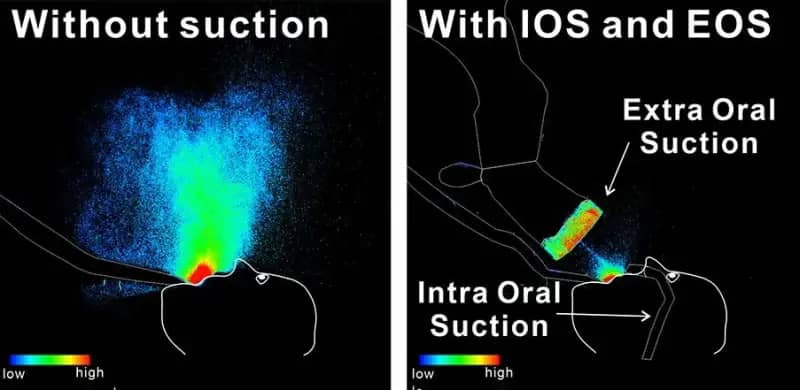
Researchers at Tohoku University in Japan have used advanced LED imaging technology to study the spread of hazardous droplets and aerosols produced during dental procedures. This method involved a high-sensitivity camera and a powerful LED light source to capture real-time images of droplet dispersion. These images revealed that aerosols, containing harmful viruses and bacteria from saliva and blood, can pose significant risks during dental treatments.
To assess the effectiveness of oral suction devices, the study utilized both extra-oral suction (EOS) and intra-oral suction (IOS). The results were impressive: the combination of both devices reduced aerosol spread by 97.8%, while IOS alone achieved a 92.1% reduction. These findings could transform safety protocols in dental practices, particularly in the post-COVID-19 era.
The research also highlighted how different treatments affect droplet dispersion. Procedures on the front teeth were found to be the most likely to cause significant droplet spread. Moreover, the correct positioning of suction devices is crucial. For instance, the EOS device was most effective when placed 10 centimeters from the patient’s mouth at a 0º angle, providing a useful guideline for dental professionals.
Despite these promising results, the study acknowledged several limitations. The mannequin used in the experiments could not simulate natural breathing or exhalation, and its lip and tongue structure did not accurately represent a human's. These factors could have influenced the results, underscoring the need for further research with real patient models to confirm the efficacy of oral suction devices.
This research contributes significantly to improving dental safety standards and could pave the way for developing advanced air purification systems and safer treatment environments. Ultimately, the study’s outcomes are critical for preventing the spread of airborne infectious diseases in dental clinics.

